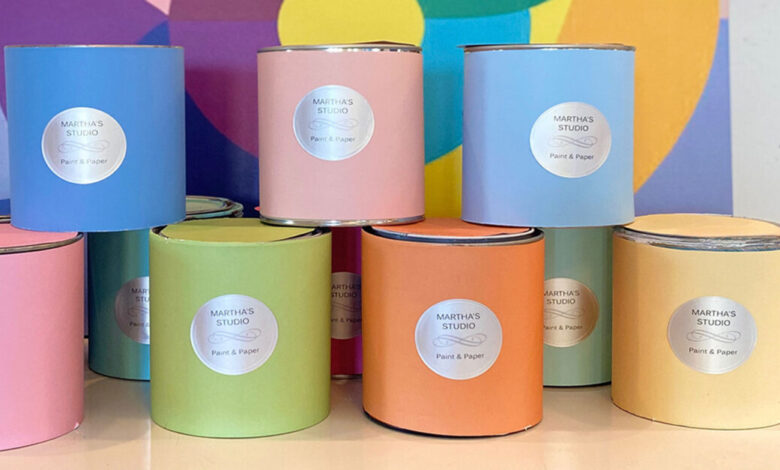Art for the Soul

Follow us on social media today!
Interview with Martha Spak
Photography courtesy of Martha Spak
Celebrated visual artist Martha Spak shares the personal take on art therapy behind her paintings and sculptures, revealing the transformative power of art on the mind.
Tell us about your art background:
I worked in journalism for years and began painting as my family grew—both my grandmothers painted, and their love for their craft had always resonated with me. I have been creating art for over twenty-five years now and exhibit regularly throughout the country. I love the creative process.
I’m a self-taught artist, and I create paintings and sculptures to convey an uplifting feel. I’m mostly known for my ethereal landscape paintings, but I’ve recently shifted to doing more abstract work, including a collection of geometric abstracts in harmonious colors.

What inspires your art?
The desire to capture a positive feeling. I create art without an overt political statement or message that brings people down; I just want to lift people up and broaden their perspectives. I like to think my art has a calming, nonconfrontational energy. What is your art-making process? It begins with color and composition— I want to make each color sing. I plan my palette in harmonious hues, lay out acrylic paints, and get the paint on the canvas as quickly as possible. I then start honing the composition by strengthening the direction of the light and, oftentimes, refining the edges with a dry brush. If I need to narrow the focal point, I will add a hard element, such as diagonal lines or horizontal lines in a heavier paint. Toward the end, I assess my work to make final applications, perhaps adding a little spark to give it a breath of fresh air: a touch of color like turquoise, for instance.
What is your art-making process?
It begins with color and composition— I want to make each color sing. I plan my palette in harmonious hues, lay out acrylic paints, and get the paint on the canvas as quickly as possible. I then start honing the composition by strengthening the direction of the light and, oftentimes, refining the edges with a dry brush. If I need to narrow the focal point, I will add a hard element, such as diagonal lines or horizontal lines in a heavier paint. Toward the end, I assess my work to make final applications, perhaps adding a little spark to give it a breath of fresh air: a touch of color like turquoise, for instance.

Would you discuss art’s therapeutical value?
A viewer should be able to stand in front of a work of art and identify something within it that speaks to them, such as a specific color, a familiar landscape scene, or anything else that will make them really feel at ease—and that takeaway should resonate with them long after they leave the art. For example, I’ll incorporate color combinations that symbolize aspects of the seasons, a lighted path that guides the eye, or a skyscape that is bright and filled with light. I can still recall artwork from years ago that gave me an uplifting feeling; if my art can have such an impact, I think it’ll have done its job.
I’ve carried this idea of color as a therapeutical concept into many health-care settings. About ten years ago, I had an exhibition at the Wake Forest Baptist Medical Center in Winston-Salem, North Carolina. Afterward, I came back home to Maryland and thought about how wonderful it was to bring light into those spaces and impact that audience. I also exhibited in the DC area at Sibley Memorial Hospital and at the National Institutes of Health. This colorful abstract collection was then exhibited at the University of Michigan Medical Center and at the Lombardi Comprehensive Cancer Center at Georgetown University.
Art can impact mental health and enhance health-care settings, but anybody could incorporate color or my visuals into their home to enjoy daily. Selections of my work are licensed and available through various retailers, including Pottery Barn and Williams-Sonoma Home.
What’s next for your career?
I am currently doing several site-specific projects, tailoring my art to fit seamlessly in public, private, and corporate settings. I’m also working on new surface designs for wall coverings, floors, fabric, and other merchandise. Whatever comes next, I hope to continue infusing positivity, joy, and harmony into everyday surroundings.
For more info, visit marthaspak.com and follow her @marthaspak
20 Views



